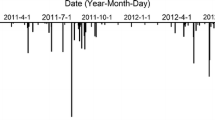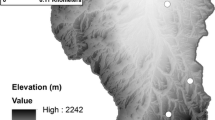Abstract.
Biological soil crusts can be the dominant source of N for arid land ecosystems. We measured potential N fixation rates biweekly for 2 years, using three types of soil crusts: (1) crusts whose directly counted cells were >98% Microcoleus vaginatus (light crusts); (2) crusts dominated by M. vaginatus, but with 20% or more of the directly counted cells represented by Nostoc commune and Scytonema myochrous (dark crusts); and (3) the soil lichen Collema sp. At all observation times, Collema had higher nitrogenase activity (NA) than dark crusts, which had higher NA than light crusts, indicating that species composition is critical when estimating N inputs. In addition, all three types of crusts generally responded in a similar fashion to climate conditions. Without precipitation within a week of collection, no NA was recorded, regardless of other conditions being favorable. Low (<1°C) and high (>26°C) temperatures precluded NA, even if soils were moist. If rain or snow melt had occurred 3 or less days before collection, NA levels were highly correlated with daily average temperatures of the previous 3 days (r 2=0.93 for Collema crusts; r 2=0.86 for dark crusts and r 2=0.83 for light crusts) for temperatures between 1°C and 26°C. If a precipitation event followed a long dry period, NA levels were lower than if collection followed a time when soils were wet for extended periods (e.g., winter). Using a combination of data from a recording weather datalogger, time-domain reflectometry, manual dry-down curves, and N fixation rates at different temperatures, annual N input from the different crust types was estimated. Annual N input from dark crusts found at relatively undisturbed sites was estimated at 9 kg ha–1 year–1. With 20% cover of the N-fixing soil lichen Collema, inputs are estimated at 13 kg ha–1 year–1. N input from light crusts, generally indicating soil surface disturbance, was estimated at 1.4 kg ha–1 year–1. The rates in light crusts are expected to be highly variable, as disturbance history will determine cyanobacterial biomass and therefore N fixation rates.
Similar content being viewed by others
Author information
Authors and Affiliations
Additional information
Electronic Publication
Rights and permissions
About this article
Cite this article
Belnap, J. Nitrogen fixation in biological soil crusts from southeast Utah, USA. Biol Fertil Soils 35, 128–135 (2002). https://doi.org/10.1007/s00374-002-0452-x
Received:
Issue Date:
DOI: https://doi.org/10.1007/s00374-002-0452-x




